Ask the Experts: Building an Optimal EP Program
At the highest level, initiating or enhancing EP services can be one of the most powerful market differentiators for a cardiovascular (CV) program. In fact, in the new era of healthcare reform, the industry has quickly realized that more patients 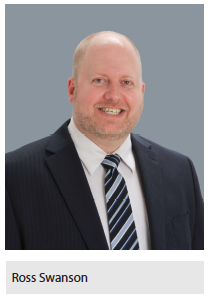 are independently seeking and evaluating specialty services as consumers rather than blindly following physician referrals. Recently, the Corazon team of cardiovascular program experts held a roundtable discussion related to the essentials of building a successful EP program.
are independently seeking and evaluating specialty services as consumers rather than blindly following physician referrals. Recently, the Corazon team of cardiovascular program experts held a roundtable discussion related to the essentials of building a successful EP program.
What value does enhancing EP services bring to the cardiovascular service line as a whole?
Ross Swanson:
One of the recent phenomena resulting from industry changes involves the search for what the public perceives as “fully comprehensive centers of care” for specialized treatment. In essence, the public has developed intolerance to receiving portions of care at multiple locations when all of their care can be rendered in one, customer-service oriented setting. This shift in the public perception makes sense as fragmentation of services has been touted as one of the most influential quality of care and safety issues within healthcare delivery. Therefore, if your organization refers or transfers patients out for specialized EP services, then those patients will likely choose to not return for other CV services performed on-site, regardless of quality or reputation.
Corazon often finds that facilities believe they cannot provide EP services due to several constraints that are often misperceptions. The most common constraint cited by our client base relates to the availability of EP specialists in geographically-isolated markets. This is not surprising, as even our recruitment staff continuously remarks about the dwindling availability of subspecialists, creating ever-increasing physician demands in services such as EP. Our team is often asked, “What is the solution to providing EP services while lacking the essential physician resources?” We recommend creative relationships with tertiary programs in order to provide local [on-site] EP physician coverage for smaller 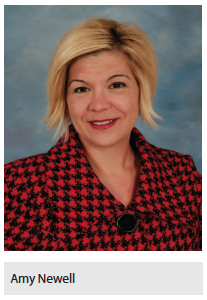 programs so patients do not have to leave their community. This serves to enhance the image of the overall CV program as well. This allocation of an EP specialist to the local community on a limited or part-time basis is extremely viable in EP services since most evaluation and treatment is provided on a non-emergent basis, making routine scheduling of the EP specialist successful.
programs so patients do not have to leave their community. This serves to enhance the image of the overall CV program as well. This allocation of an EP specialist to the local community on a limited or part-time basis is extremely viable in EP services since most evaluation and treatment is provided on a non-emergent basis, making routine scheduling of the EP specialist successful.
Interestingly, one of the less common constraints to advancing the services has to do with a strict regulatory environment in EP services when compared to more scrutinized CV services such as coronary angioplasty (PCI). Corazon has worked in states where some regulation related to more advanced levels of EP services exist [discussed later, but these restrictions have not been as prevalent as PCI regulatory barriers]. This is good news for programs considering enhancing EP services, as the lesser the restrictions within this service, the more programs can quickly initiate their services without regulatory bureaucracy.
The other important consideration for programs considering new or enhanced EP opportunities has to do with the growth opportunities that are consistently available in EP. This growth opportunity is essential for the CV service line, as programs are struggling to project future growth in other core CV services. In contrast to other procedural-based cardiology services, such as diagnostic catheterization and PCI, we often find that the available patient market for EP-related needs in many regions remains untapped. For example, Corazon believes that there is great opportunity in atrial fibrillation (AF) treatment. As a matter of fact, heart disease and stroke statistics from the American Heart Association in 2015 continue to present impressive epidemiologic figures related to AF. There are still more than 2.5 million people in the U.S. afflicted with AF, and like other CV disorders, the prevalence increases with age. This presents a large growth opportunity for many programs that may not even be considering treatment of AF as a core CV service. Hospitals must bear in mind, however, the Appropriate Use Criteria (AUC) scrutiny associated with overall cardiac device implants and Department of Justice investigation related to the alleged overuse of ICDs. This is just another aspect of EP specialty development and clinical/operational implementation that requires attention in terms of program quality and 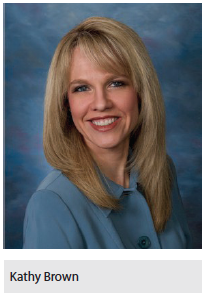 outcomes.
outcomes.
Talk about what types of EP programs you’re seeing within CV service lines across the country. How do program trends shape the scope of the CV specialty overall?
Amy Newell:
Many programs across the country begin to treat the EP patient population by offering expanded medical and therapeutic treatments for electrical conduction and/or function. As with other conditions in many markets, the number of patients afflicted with conduction disorders is on the rise, so finding a way to treat at least a portion of the market is beneficial to both the program and patients. Atrial fibrillation is the most common type of arrhythmia; it is often undetected clinically and many patients do not even realize they have a rhythm issue, so beginning with treatment for AF can be a great means for funneling additional EP volumes into the program (along with an increase in other cardiovascular procedures as a halo effect).
Several levels of EP services exist for programs to follow as a basic guideline of offerings, but it is not uncommon for many states across the country to have written regulations addressing what level of EP services may be established in a hospital without on-site open-heart surgery:
- Level I program – includes pacemaker and standard defibrillator procedures.
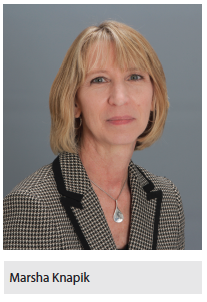
- Level II program – includes Level I procedures as well as cardiac resynchronization therapy (CRT), diagnostic EP studies (mapping), and “simple” ablations.
- Level III program – includes all of the above procedures, and adds more “complex” ablations for atrial fibrillation and ventricular tachycardia.
Level II and Level III programs may require the presence of an open-heart surgical program, given their level of complexity, scientific advancement, and the collaboration necessary between the electrophysiologist and cardiac thoracic surgeon for the more complex/hybrid procedures.
Stroke and heart failure are the two most common complications of AF. Approximately 40% of individuals with AF will develop a complication, such as up to a 17-fold increase in stroke risk.1 Even higher stroke risk is associated with elderly patients who have a diagnosis of AF. Thus, programs offering expanded EP services also must consider the synergies with the neuroscience service line. This includes the implementation of assessing the patient both pre- and post-EP procedure for signs and/or symptoms of a stroke. One example of this assessment can include a standard approach to the abbreviated NIHHS stroke scale.
What are the essential building blocks for a successful program?
Kathy Brown:
A successful EP program can take shape in different ways, as Amy explained above with the various levels of care available. A hospital performing smaller volumes of less complex cases will require a different type of investment in staff, equipment, and supplies than a center providing the full range of EP services. However, amid these basic building blocks, the one requirement that should never be ignored is strong physician leadership and a cross-trained staff that works together as a team for maximum program support.
A strong medical director will set the vision for the EP program — big, or small. According to the Heart Rhythm Society (HRS) guidelines, the medical director should be ABIM certified in Clinical Cardiac Electrophysiology (CCEP) and have 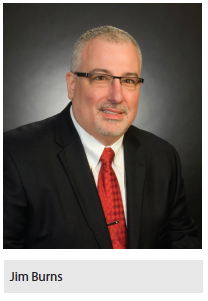 the appropriate operator volumes. His or her focus in leading the program must be on providing overall medical direction and supervision within the EP lab, and that other physicians are appropriately credentialed by monitoring their didactic and procedural competencies. Overall lab quality improvement as well as policy and procedure development are also part of the medical director’s role in promoting successful patient outcomes. However, more than the prescribed job description tasks, the physician must be critical in creating a culture of cohesiveness, attracting talented staff excited about EP.
the appropriate operator volumes. His or her focus in leading the program must be on providing overall medical direction and supervision within the EP lab, and that other physicians are appropriately credentialed by monitoring their didactic and procedural competencies. Overall lab quality improvement as well as policy and procedure development are also part of the medical director’s role in promoting successful patient outcomes. However, more than the prescribed job description tasks, the physician must be critical in creating a culture of cohesiveness, attracting talented staff excited about EP.
Whether a small or large program, a consistent staff focused on EP will provide higher quality care, as they will be more knowledgeable about using, interpreting, and troubleshooting the many complex technologies used only in EP. In small programs, staff who gravitate to EP may still be performing cardiac catheterization cases. These nurses and technicians should be given additional EP-focused education as well as opportunities to participate in program development (data collection, supply ordering, etc.). As volumes grow, every effort should be given to schedule a core staff around EP. In order to efficiently use this staff, cardiac nurses and radiologic technologists should be cross-trained to perform as many roles within the procedure as their scope of practice allows.
To support the cross-training of staff, the Society of Invasive Cardiovascular Professionals has developed a unified Scope of Practice for staff obtaining the Registered Cardiac Electrophysiology Specialist (RCES) certification. Staff with this certification understands how to function in the four roles in the EP suite: scrub assistant, imaging equipment operator, circulator, and patient monitor/documenter. Staff (nurses and radiologic technologists) cross-trained in these roles have received training additional to their formal education in order to pass the certification. They are functioning within the procedure under the direction of the electrophysiologist. Essentially, Corazon recommends size-adjusting a program in order to offer safe and cost-effective care, while ensuring a focus on leadership and staff for success.
Smaller EP programs often share a procedural lab with a cardiac catheterization program, performing EP cases on certain days of the week. Technology has advanced in order for both programs to share fluoroscopic equipment, recording systems, emergency equipment, and if needed, anesthesia equipment in the same space. This approach ensures that basic diagnostic EP procedures, as well as device implants, are cost-effectively performed while controlling expenses and space requirements. On the other hand, high-volume centers that perform advanced mapping, ablations, and even hybrid procedures must invest in rooms that meet the rigorous standards of ORs, but with high-quality fixed fluoroscopy and a wide range of EP equipment to include mapping systems, stimulators, radiofrequency generators, intracardiac echo (ICE) systems, and even robotic navigation systems.
After understanding essential program components, what quality expectations exist within EP and how can a program best manage clinical outcomes?
Marsha Knapik:
Quality monitoring and reporting in electrophysiology has no standardized dearth of specific indicators or items. But even before a reporting dashboard is developed, the overall quality reporting process must be clearly outlined. In a full-service program, the quality data should report through existing invasive laboratory reporting structures, usually a cath lab quality committee. Prior to data going to this committee, the information should be collected, compiled, and reviewed by the department clinical manager in conjunction with the EP medical director. The cath lab medical director can also serve in this role if a distinct EP medical director position is not in place; however, based on Kathy’s leadership discussion above, Corazon most definitely recommends having an EP medical director as a means to direct, oversee, and guide the specialty.
Data should feed into reporting processes from several channels. First, a set of quality metrics or indicators should be followed on an ongoing real-time basis (many of which may be also reported out retrospectively from a data registry such as the ACC-NCDR ICD Registry™). In addition, the EP lab can set some case review triggers (such as high fluoro times, excessive case times, case cancellations day of procedure, any adverse case outcomes, etc.) that would indicate the need for individual case review.
Finally, any lab occurrences reported via the hospital risk management reporting process should be reviewed. Data from these three reviews (metrics, case review triggers, risk events) should be analyzed, summarized, and forwarded for the cath lab quality committee for any comment, recommendations, or follow-up actions. Beyond this committee review, a summary of the data, along with any other cath lab data reported in that committee, should then follow through appropriate routing to the hospital quality councils, Medical Executive Committee, and eventually to the Hospital Board of Trustees or as outlined in the organization’s quality process.
Overall EP program performance and quality metrics can be generated into several focused categories. Process metrics evaluate lab performance and throughput, and can include metrics such as first case on-time starts, between case turnaround time, and rate of same-day case cancellations. Outcome metrics can include complications such as incidence of vascular/groin complications (hematoma, bleeds, AV fistula), incidence of tamponade or pericardiocentesis following AF ablation (also a PQRS measure), appropriate antibiotic use, timing of antibiotics and discontinuation (Surgical Care Improvement Project [SCIP] Core Measures), infections within 180 days of implantation of devices, and others. Individual physician metrics may include use of standard order sets and/or the timeliness of case dictation. Corazon also believes no quality monitoring process is complete in today’s healthcare environment without some attention to patient satisfaction. This indicator may necessitate the use of individual surveys or follow-up to compile data related specifically to EP, rather than the department as a whole.
Finally, volume and financial indicators round out a reporting dashboard. Case volumes, inpatient/outpatient mix, and case types may be assessed from the hemodynamic systems, cath lab logs, or other more readily accessible sources. Financial data, such as contribution margin per case (by type) or supply cost per case (either overall or by physician) may prove difficult to obtain. If available, however, they can serve to present a full program outcomes picture for EP — the ultimate goal of any quality review program.
Many organizations may be reluctant to formalize an EP program due to a perception in the industry that the subspecialty can be a “loss leader.” Please comment on how EP can create a positive contribution margin.
Jim Burns:
Corazon is happy to dispel this myth as utterly false! Programs can achieve a solid contribution margin from electrophysiology cases, both for procedures and devices, but it takes work. Consider that the average CMS inpatient reimbursement for an ablation to treat AF is $11,000, and the average inpatient reimbursement for complex devices for arrhythmia management is $35,000. These are healthy payment numbers relative to many others in the cardiovascular specialty. However, oftentimes the key players in making EP cases financially solvent are those who utilize the expensive products: the physicians. Physicians drive resource utilization, and in this role, they are an integral element in helping programs manage costs and generate profit from any procedure. Transparency with the physician team members is crucial. Because of the significant mismatch in how physicians are paid versus payments to hospital facilities, many doctors perceive that hospitals make significantly more money than physicians do for the same procedure. What is not always clear is that the hospital payment is all encompassing for the entire episode of care, and is meant to support the infrastructure needed to maintain all of the hospital’s departments and required services. Physician payments are direct to the provider for his or her time, portion of practice overhead created by this activity, and dollars to support malpractice coverage. Furthermore, physician payments are related to each activity performed by the physician during the case and recovery care afterward.
Physicians need to understand all EP device and supply options, including prices, so that they can begin to understand the financial impact of their care decisions. This is especially important in the realm of EP, as the devices can have so many options available that dramatically change the pricing. The physician understanding also holds true for staffing and major equipment costs. Being transparent and inclusive in the budgetary process with all stakeholders is always “best practice,” and can lead to a much more realistic discussion as to what supplies and equipment are “preferred” or selected/used, and how those choices directly affect the bottom line for both the program overall and the physician individually.
Another “best practice” approach is to vet all potential additions to supply and device inventory through a committee that includes the physicians who will use them, along with representatives from Purchasing, Finance, and any other relevant clinical area. This process, while taking longer, creates a deeper understanding of the products’ intended core customer, brings to light situations where another product may be better suited to the patient’s condition, and helps decision-makers understand what programs are in place through the vendor to provide additional discounts or reimbursement when historic payments will not cover the costs.
Corazon, Inc. is a national leader in strategic program development for the heart, vascular, neuro, and orthopedic specialties. Corazon offers a full continuum of consulting, software solution, recruitment, and interim management services for hospitals, health systems, and practices of all sizes across the country and in Canada. To learn more, visit www.corazoninc.com or call 412-364-8200. To reach the authors, email rswanson@corazoninc.com, kbrown@corazoninc.com, jburns@corazoninc.com, anewell@corazoninc.com, or mknapik@corazoninc.com.
Reference
- “Atrial Fibrillation is a major risk factor for stroke.” https://www.thrombosisadviser.com/en/atrial-fibrillation/af-is-a-major-stroke-risk-factor/. Accessed 11 June 2015.
EP Statistics
- Electrophysiology (EP) is the fastest growing cardiovascular discipline, according to the Heart Rhythm Society.
- EP creates a one-stop shop for programs that offer other advanced CV services.
- AF is the most common arrhythmia. According to HRS, it affects more than 2.5 million American adults and accounts for approximately one-third of hospitalizations for abnormal heart rhythms.
- The estimated costs attributed to AF alone are over $6 billion/year in the U.S.
- Difficulty finding subspecialty EP physicians in many markets across the country has resulted in a growing need based on population requirements and less on physicians choosing their subspecialty.











